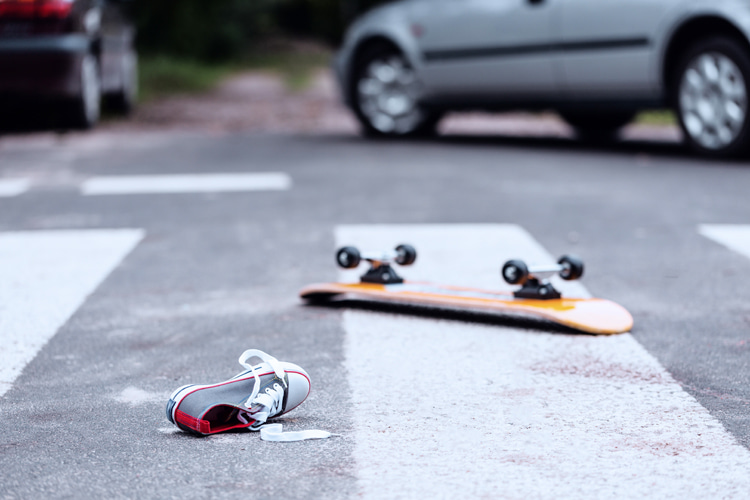Skateboarding is a popular and exciting outdoor activity, but it can also be dangerous. However, every year, thousands of skaters end up in the emergency room due to sports-related injuries.
The following article explores the most common types of skateboard injuries and discusses ways to prevent them.
The most common skateboarding lesions include fractures to the nose and cheeks, lacerations, and broken teeth.
These injuries can be severe and may result in permanent scars and disfigurement.
Head injuries, including concussions, are also common among skateboarders and can be particularly dangerous.
Plantar fasciitis, a condition that causes pain in the foot's heel and arch, is another common injury among skateboarders due to the intense, gripping motion of the toes while skating.
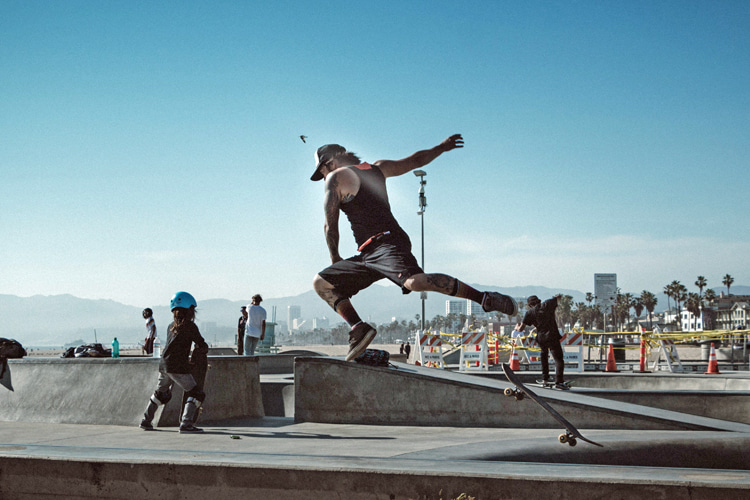
Thousands of Hospital Admissions
Skateboarding injuries can occur at any age, but they are more common in boys, with 60 percent of cases involving children under 15.
However, anyone can be at risk of injury while skateboarding, regardless of age or gender.
In the 2010s, skateboard-related injuries have increased among older adults, with the most significant increase among those aged 25 and over.
It also seems that men are more likely to experience head injuries than women.
Furthermore, age may also be a factor, with older skateboarders being more at risk of severe traumatic brain injury (TBI).
However, it is essential to stress that the information provided is limited. Therefore, further research would be needed to confirm these findings.
According to the National Safety Council (NSC), over 245,000 people were treated in American hospital emergency rooms after being injured while skateboarding in 2021.
The most common injuries among this age group are fractures, sprains, and dislocations.
Preventing skateboarding injuries is crucial to keeping yourself and others safe.
Some simple steps include wearing protective gear, practicing on a safe surface, and avoiding skating in unsafe conditions.
If you experience a skateboarding injury, it is vital to seek medical attention as soon as possible.
In conclusion, skateboarding can be a thrilling sport. But it is paramount to be aware of the risks, wear protective gear, follow safe skating practices, and take steps to prevent injuries.
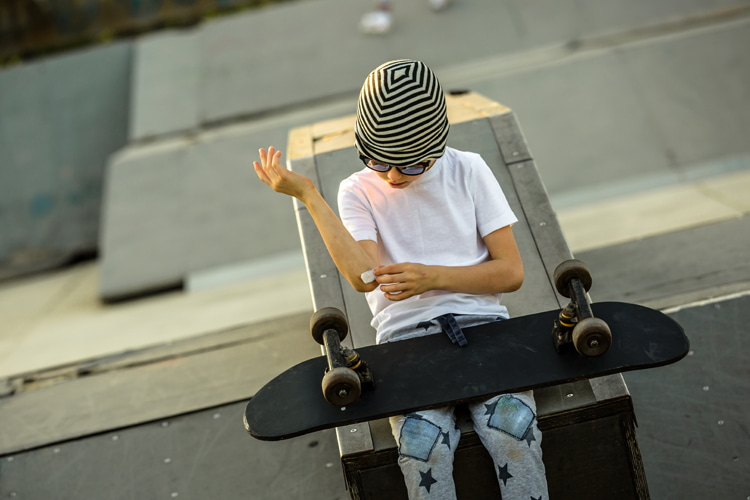
Getting Back to Skateboarding After Injury
Have you suffered a lesion while skating? Here are the steps to get back into skateboarding after a painful injury:
- Assess the wound and seek medical attention if necessary;
- Start slowly and gradually increase the amount of time spent skateboarding;
- Warm up before skateboarding to increase flexibility and reduce the risk of further injury;
- Wear protective gear, especially if feeling uncomfortable or uncertain about performing certain tricks;
- Avoid pushing yourself or allowing others to force you to do tricks that you are not yet ready for;
1. Nose Fractures
A nose fracture is a break in the bone of the nose.
It can occur due to a direct impact or force applied to the nose, for example, when a skateboarder falls and hits their nose on the ground.
Nose fractures are a common type of skateboarding injury.
They can be particularly severe because the nose is a delicate and sensitive part of the face.
Skateboarders who experience a nose fracture will be unable to continue skating and will likely need medical attention.
The severity of the fracture will determine the amount of time it takes to heal and the extent of any permanent damage or scarring.
2. Cheek Fractures
A cheek fracture is a break in the bone of the cheek and commonly results from blunt force trauma to the face.
It can occur due to a direct impact applied to the cheek, for instance, when a skateboarder falls and hits their face on the ground.
Skateboarders who experience a cheek fracture may experience pain and bruise.
Because cheek fractures can be easily overlooked and left to heal on their own, skateboarders need to seek medical attention if they experience any facial injuries.
Keep in mind that cheek fractures can result in permanent scarring and disfigurement.
Wearing protective gear, such as a helmet and knee and elbow pads, can help prevent this type of injury.
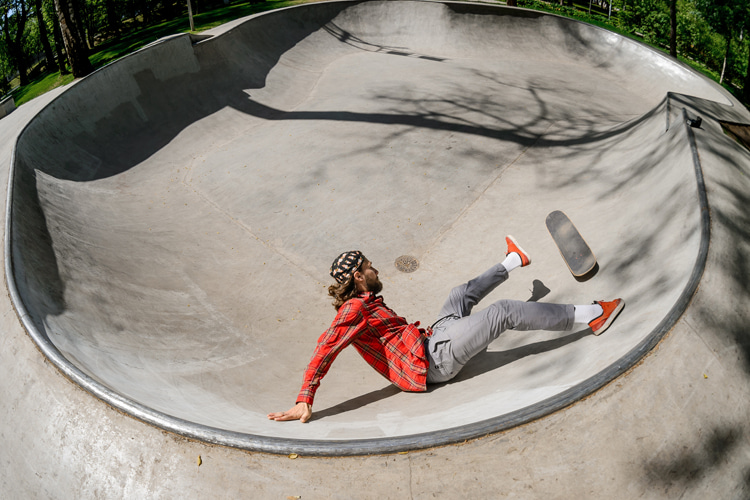
3. Lacerations
A laceration is a type of injury in which the skin is cut or torn.
It can occur due to a sharp object or blunt force trauma, such as when a skateboarder falls and hits their skin on a rough surface.
Lacerations are a common type of skateboarding injury and can range in severity from minor cuts to deep gashes.
They can be treated by cleaning the wound with water and soap, applying a bandage, and applying a layer of triple antibiotic ointment.
It is essential to avoid getting dirt in the wound, as this can increase the risk of infection.
Skateboarders who experience lacerations should seek medical attention if the wound is deep or doesn't stop bleeding.
4. Broken Teeth
Broken teeth can occur when a skateboarder falls and hits their mouth on the ground or their skateboard.
They range in severity from small chips to complete tooth fractures, can be painful, and result in permanent damage to the tooth.
Treatment options for broken teeth include restoring the fractured tooth, root canal treatment if the pulp tissue is involved, or tooth extraction if the prognosis is poor.
It is critical to collect all pieces of the tooth if it is broken, as this can help the dentist determine the best course of action.
5. Plantar Fasciitis
Plantar fasciitis is a condition that occurs due to the irritation or inflammation of the plantar fascia, a band of tissue that connects the heel bone to the base of the toes.
This condition is common in skateboarders due to the intense, gripping motion of the toes while skating and poor calf strength or flexibility.
Symptoms of plantar fasciitis include pain in the heel and arch of the foot, shin splints, and arch pain.
The cause of plantar fasciitis is not always clear, but it can be caused by overuse, genetics, or other factors.
Skateboarders who experience these symptoms should seek medical attention to diagnose and treat the condition.
Treatment options for plantar fasciitis include stretching exercises, physical therapy, orthotic inserts, and pain medication.
In some cases, surgery may be necessary to treat the condition.
Skateboarders can help prevent plantar fasciitis by stretching and strengthening the muscles in their feet.
6. Head Injuries and Concussions
Skateboarding can lead to falls that may result in head injuries. There are two main types of head injuries: closed and open.
Closed head injuries result from a hard blow to the head that does not break the skull. In contrast, open or penetrating head injuries occur when an impact breaks the skull and enters the brain.
These injuries are usually more severe and may require immediate medical attention.
Falling as little as two feet can cause skull fracture and brain injury.
Skaters should be aware of the risks of head injuries and take appropriate precautions to prevent them.
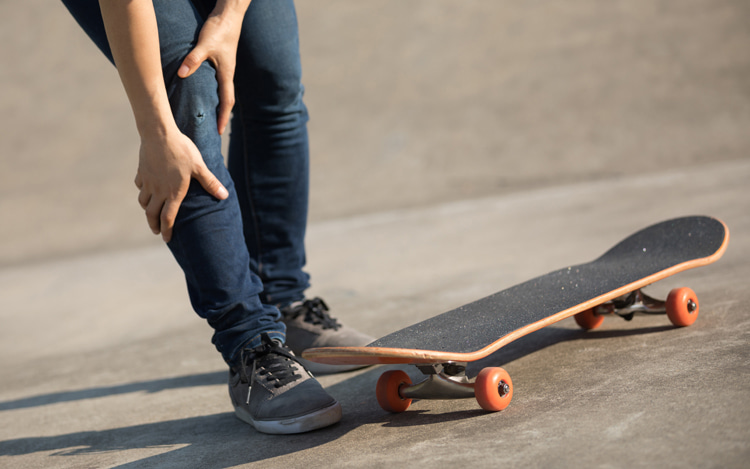
7. Broken Bones
Broken bones are a common injury in skateboarding, mainly when skateboarders perform tricks and maneuvers or ride bowls and big ramps.
The most commonly broken bones among skateboarders include the wrist, ankle, elbow, arms, and legs.
Specifically, wrist fractures are a prevalent injury, as well as fractures in the upper arm (humerus) and the lower leg bones (fibula and tibia).
The severity of the injury depends on the skater's experience, the type of riding surface, and the trick being performed.
The most dangerous tricks are those performed in the air, such as flips, spins, and rail slides.
Most broken bones occur when skaters land incorrectly or fall off their boards.
The risk of a broken bone increases with the speed of the skater and the height of the jump.
Overall, broken bones are relatively common among skateboarders, particularly when they are performing stunts and tricks.
It is important to practice safety and wear protective gear such as helmets, knee pads, and elbow pads to reduce the risk of injury.
8. Sprains and Strains
Skateboarding can result in different sprains and strains, including ankle sprains.
Ankle sprains are a common skateboarding injury that can occur when the rider falls off their skateboard or lands awkwardly after a jump.
These sprains are caused by tears in the ligaments that support the ankle and can be painful.
A doctor can properly diagnose the injury and recommend treatment options. In severe cases, surgical repair may be necessary.
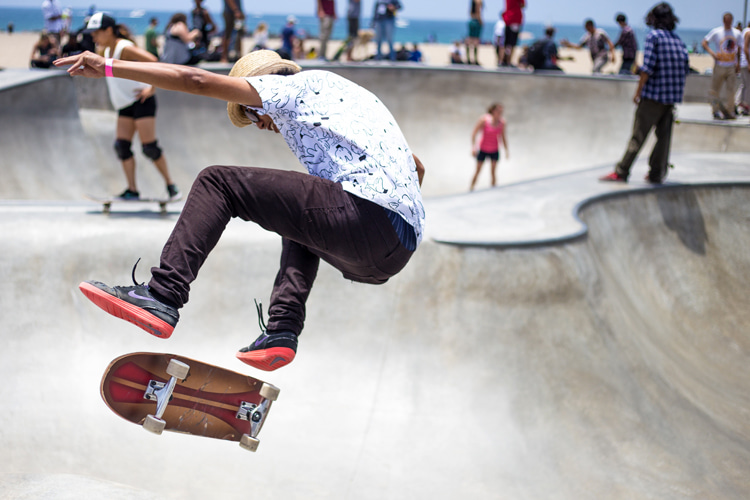
9. Contusions
A contusion is a type of head injury that can occur when a skater collides with another person or trips over an object and hits their head or neck on a hard surface.
Concussions are the most commonly talked about type of head injury in skateboarding, but contusions can also be a concern.
Like concussions, contusions can disrupt normal brain functions, though this may be temporary or permanent.
The best way to reduce the risk of a contusion or other skateboarding injury is to wear proper skateboarding equipment, practice continuously, and stay in good physical condition.
However, it is essential to underline that not all injuries are preventable.
10. Dislocations
Joint injuries can occur in skateboarding as a result of the high-impact and high-speed nature of the sport.
Skateboarders are at risk of injuring their joints, particularly in the ankles, knees, and wrists.
Ankle sprains and fractures are common types of joint injuries in skateboarding. These injuries can be caused by stepping off a skateboard and rolling the ankle to the side.
To reduce the risk of skateboard-related joint injuries, skateboarders need to be experts at controlling their speed and using proper techniques when turning and braking.
Skateboarders can also prevent joint injuries by maintaining good physical condition, stretching before skating, and wearing protective gear such as wrist guards and knee pads.
11. Knee Injuries
Knee injuries are a widespread type of injury among skaters, and they can be caused by the sport's fast-paced and high-performance characteristics.
Skateboarders risk injuring their knees, mainly when they fall or collide with other skaters or objects.
To prevent knee injuries in skateboarding, it is crucial to warm up properly before skating and to stretch both before and after riding a skateboard.
Skateboarders can also reduce their risk of knee injuries by wearing protective gear such as knee pads and avoiding skating in areas with heavy motor vehicle traffic.
Preventing Skateboard Injuries
Here are a few tips on how to avoid skateboarding injuries:
- Wear protective gear, including helmets, wrist guards, and knee pads;
- Warm up properly before skating and stretch both before and after your session;
- Avoid skating in areas with heavy motor vehicle traffic and choose beginner sections of skate parks if you are a beginner;
- Empty your pockets of sharp and hard objects before getting on your skateboard;
- Practice falling correctly to avoid serious injuries;
- Engage in calisthenics or other forms of exercise to strengthen your muscles and improve your balance;
- Take regular breaks to rest and allow your body to recover from the physical demands of skateboarding;
- Follow good skateboarding safety practices and listen to the advice of more experienced skaters;
